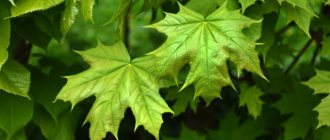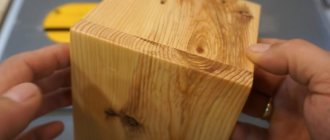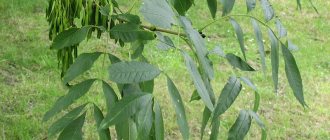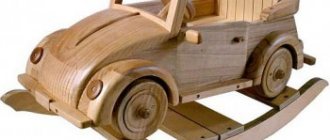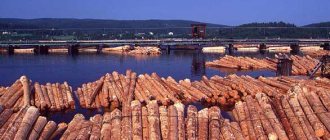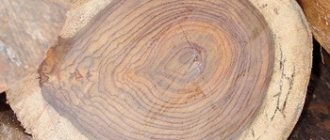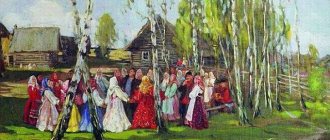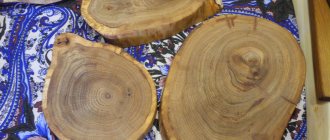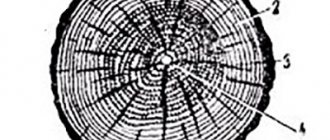The Hornbeam tree has been indispensable in human economic activity for several centuries. It serves as an excellent decoration for forest parks and is of particular interest to landscape designers. Its wood is similar to ebony, is highly wear-resistant and is used in the production of particularly hard structures.
Hornbeam tree: botanical description and features
Beautiful hornbeam can be found on alleys in public parks, gardens, private lands, as well as in forest-steppe areas. Ideal for decorative curly haircuts. It belongs to the birch family and is monoecious. The deciduous tree tolerates frosts down to −15 degrees and is unpretentious. Provides great opportunities for implementing creative landscaping solutions.
Cultivation is carried out:
- Hedges of various heights;
- In decorative compositions;
- In single plantings.
Hornbeam has a lush crown of dark green color and cylindrical shape. It grows slowly - the trunk diameter of mature trees is within 40 cm. The height reaches 30 m. The crown width varies from 5 to 8 meters. The bark is smooth, gray. Life expectancy can reach 300-350 years.
Flowering occurs in April-May. Flowers are dioecious in the form of neat inflorescences:
- With stamens of bracts in lateral catkins. Length 1.5 cm;
- With a pistil in apical earrings. They reach 3-8 cm. They have unequally jagged edges.
Reference! The hornbeam is self-pollinating.
Trees enter the fruiting stage after 20 years. Fruit production begins in June-July. These are tiny brownish nuts 3-5 mm in diameter with shiny smooth skin, single-seeded and single-lobed. 1 kg of fruit contains 33-35 thousand nuts. From 1 hectare of hornbeam grove, up to 1-1.5 tons are collected.
Hornbeam leaves are pointed, simple, alternate. Oblong, shaped like an egg. They grow from 5 to 15 cm in length. The underside of the plate is pubescent - contains thin villi. The veins are clearly located on top. During autumn leaf fall, the leaves transform, turning yellow, orange, and burgundy. Hornbeam is light-loving, but at the same time it tolerates shadow well. It is wind resistant.
The root system is powerful, with dense branches. Sometimes the roots protrude above the soil surface. It is famous for its hard, durable, abrasion-resistant wood, which has been widely used since ancient times. When burning, a smokeless flame is formed, which is extremely convenient to use. Hornbeam is used in bakeries and forges.
Benefits of hornbeam
Hornbeam leaves have beneficial properties. They are not used for medicinal purposes, but are nutritious and full of micronutrients. Contain:
- ascorbic, caffeic and gallic acids;
- tannins;
- bioflavonoids;
- aldehydes;
- coumarins.
The seeds of the plant are rich in healthy fats. Plant flowers brewed in boiling water are used to normalize the functioning of brain vessels. Before use, you should consult your doctor.
Location and growth
Many nature lovers are interested in: “Where does the hornbeam tree grow?” It can be found almost everywhere in Europe. It is especially popular in Russia, the Baltic states, Ukraine, and Belarus. Widely distributed in Asia, Iran, the Caucasus and Transcaucasia, North America. Occupies the undergrowth of broad-leaved and coniferous zones, grows up to 2 layers. Prefers to grow:
- On the sunny slopes.
- In the lower and middle zones of the mountains.
- On the edges of the forests.
- In rocky ground.
Reference! Often found in shiblyak.
Trees love moist, fertile soil. They do not settle in swampy and acidified soils. Found in mountains on slopes, in dry calcareous areas.
Primorsky hornbeam
This variety of hornbeam is called “heartleaf” because its leaves at the base are shaped like a heart. It grows in height from 10 to 20 meters.
Places of distribution are China, Korea, Japan, the Primorsky Territory of our country, and its southeastern regions. Here the hornbeam prefers to settle at the foot of the mountains at an altitude of 200-300 meters, and in the shade of the second tier of mixed forests. This variety of hornbeam is highly decorative. The tree is beautiful at any time of the year.
Varieties of hornbeam
There are about 50-60 types of hornbeam according to different classifications. The main representatives grow in Asia, there are 30-40 species here. Only 2 species are common in Europe, 3 in Russia and 1 species in North America.
European hornbeam
It is found mainly in European countries in forested areas. Grown in forested areas. It is also called common hornbeam. It grows up to 20 m, the crown covers up to 8 m and looks openwork and lush. Prefers a mild, warm climate and areas exposed to the sun. Flowering occurs in the second half of spring.
Black hornbeam
Distributed in Crimea and the Caucasus, grows in southeastern Europe. Also, the natural habitat is the Balkans, Iran, Asia Minor. Has several names:
- Hornbeam;
- Eastern hornbeam;
- Black hornbeam.
The main difference is the small height, ranging from 7-10 meters. Flowering begins in mid-spring. Nuts appear from the end of June, in the first ten days of July. Does not like wetlands with acidic soil.
Caucasian hornbeam
Grows on the Crimean Peninsula, the Caucasus, and the northern regions of Asia Minor. Mostly all trees are small in height - up to six meters. Effectively fills mountain ranges along with oaks, beeches, and chestnuts.
Carolina hornbeam
Originally from North America, where it is represented everywhere. Loves areas along rivers and forms the basis of forests. The average height varies from 6 to 12 m. The crown is wide, spreading. The trunk is ribbed within 30 cm. It loves warmth and is not resistant to frost.
Heart hornbeam
The tree's homeland is the east. Grows in China, Japan, Korea. Heart-leaved hornbeam grows up to 20 meters in height. The name reflects the peculiar shape of the leaves, reminiscent of a heart. Favorite habitats are the foothills of the mountains; it occupies an important place in mixed forests.
Hornbeam Turchaninov
Grows on the mountain slopes of China. It stands out among other types due to its unique decorative effect:
- The crown has a regular round shape.
- The leaves shine with gloss.
- There is an interesting notch along the edges of the leaf blades.
Color shades change throughout the season:
- In spring the leaves turn bronze.
- At the height of summer they turn emerald.
- In the fall they turn to yellow-orange gold with splashes of red.
Virginia hornbeam
Grows in North America in the southeast. Somewhat capricious and whimsical when it comes to cultivation. But at the same time it serves as a magnificent decor for gardens and parks. Grows up to 12 meters.
General characteristics
- Family: Birch
- Botanical name: Betulaceae
- Planting location: residential areas, gardens, parks, landscaping of city parks.
- Foliage: Deciduous (loses leaves seasonally)
- Hornbeam size range: medium tree (7-10 meters), small tree (4-7 meters)
- Light Exposure: Full sun (6 hours of direct light daily), partial sun/shade (4-6 hours of light daily), full shade (4 hours or less of light daily)
- Soil Preference: Acidic and moist, well-drained soil
- Allowed: dry and wet areas, alkaline and clay soil.
- Soil salt: zero tolerance
- Drought conditions: moderately tolerable
- Growth rate: slow
Other notable characteristics of hornbeam include:
Bark: Young trees have smooth gray bark with light grooves. Mature trees have dark gray bark with deep grooves and ridges.
Leaves: Measuring about 7-10 centimeters in length, hornbeam leaves are elliptical in shape and densely veined with pointed tips. They resemble a wedge with jagged edges. The upper part of the leaves is dark green and the lower part is pale green. In autumn the leaves turn bright red, scarlet and orange. In winter, brown leaves sometimes hang from the tree.
Flowers: Hornbeam has male and female blooms. The first are yellowish earrings about five centimeters long, and the second are green earrings that grow up to two centimeters.
Fruit: The small hornbeam nut is contained in catkins that are attached to leaves with three lobes.
Reproduction
To obtain young seedlings, vegetative techniques and seeds are used.
Main types of hornbeam propagation:
- Cuttings. The most convenient and fastest. Cuttings up to 20 cm are cut from strong shoots. They are disinfected in potassium permanganate. Soak for 2-3 days in water. Planted in a moist fertile substrate. When the first 3 leaves appear, they are transplanted to a permanent place.
- Seeds. The complex process begins with the autumn collection of seeds. The germination of seed is maintained for 3 years. 1 month before planting, they begin preparation - heating, soaking. Shoots appear 10-14 days after sowing.
- By layering. Least reliable option. The grooves dug next to the hornbeam are fertilized and moistened. For layering, young shoots with cuts are used.
Use of wood in everyday life
The common hornbeam has the strongest wood among the traditional trees of the temperate zone of Eurasia. However, the high moisture content coefficient (60%) creates conditions for severe drying. Therefore, hornbeam wood is of little use in construction.
The disadvantages of wood include: drying time, difficulty in processing.
Its abrasion resistance allows it to be widely used to create all kinds of household and household items. Hornbeam wood is used to make shovel shafts, handles of working tools, billiard cues, golf clubs, chess, musical instruments, and cutting boards. The undoubted advantage of wood is its sinuous internal structure, combining layers of different shades. Aesthetics played an important role in the manufacture of decorative attributes from hornbeam - parquet, mosaics.
In the past, wood served as fuel for stoves and fireplaces. It was highly regarded for its smokelessness.
Landing
The optimal time for planting is the end of September, October. Approximately 1 month before the onset of frost. If you plant in the spring, it is important to do so before the buds open. The place is chosen in the shade or partial shade. When planting in a row in a trench, maintain a distance of at least 30-40 cm. The planting hole should be 50-60 cm deep. Pour 1 bucket of water. After 2 days they begin planting:
- Rotted compost is placed at the bottom.
- Lay a drainage layer.
- The seedling is sprinkled with soil mixture.
- The soil is compacted.
- The tree trunk circle is mulched with hay or covered with stones.
- For speedy rooting, provide sufficient watering.
After 3-4 days, water again.
Young seedlings are wrapped to protect them from frost before wintering. The base of the trunk is wrapped in burlap. Monitor the tree trunk and remove weeds. The first pruning begins after 2 seasons.
Table of hardness, density and stability of wood
List of trees and their wood in photographs.
Hardness
Usually determined by the Brinell method. To do this, a hardened steel ball with a diameter of 10 mm is pressed with a force of 100 kg into the surface of the wood, the hole is measured and the hardness value is calculated.
To the right of the Brinell hardness is the Yankee hardness test. Expressed as the force (in pounds) that must be applied to a metal ball with a diameter of 0.444 inches (11.28 millimeters) to press it half its diameter into the wood.
The harder the wood, the higher the coefficient. The hardness of wood within the same species may differ depending on the cut (for example, dies of a radial cut will be harder than a tangential one). The table shows average values.
Density
Depends on humidity and for comparison, density values always lead to the same humidity - 12%. There is a close relationship between the density and strength of wood. Heavier wood is generally more durable. The density value varies within very wide limits.
Based on density at a humidity of 12%, wood can be divided into three groups:
- low density species (less than 510 kg/m3): pine, spruce, fir, cedar, poplar, linden, willow, alder, chestnut, walnut;
- medium density species (550-740 kg/m3): larch, yew, birch, beech, elm, pear, oak, maple, sycamore, rowan, apple, ash;
- species with high density (above 750 kg/m3): white acacia, iron birch, hornbeam, boxwood, saxaul, pistachio, dogwood.
Symbols for the stability of wood when exposed to moisture:
5 – absolutely stable (wood does not deform even with large changes in air humidity); 4 – stable (wood practically does not deform with small changes in air humidity); 3 – relatively stable (wood deforms very slightly with small changes in air humidity); 2 – medium-stable (wood noticeably deforms with small changes in air humidity); 1 – not stable (wood is significantly deformed with small changes in air humidity);
| Name | Brinell hardness kgf/mm2 | Yankee foot hardness | Stability | Density kg/m3 |
| Abacha | 250 | 380-420 | ||
| Apricot | 760-800 | |||
| Amaranth | 5 | 1860 | 3 | 860-880 |
| Angelik | 4,4 | 2 | ||
| Acacia | 7,1 | 2 | 830 | |
| Afzelia | 4 | 4 | 830 | |
| Afromosia | 3,8 | 4 | 710 | |
| Lignum vitae | 4500 | 1375 | ||
| Balsa | 100 | 120-160 | ||
| Bamboo | 4 | 2 | ||
| Birch | 3 | 1260 | 3 | 540-700 |
| Karelian birch | 3,5 | 1800 | 3 | 640-800 |
| Bilinga | 1630 | 630-780 | ||
| Bokote | 2200 | 750-850 | ||
| Bongossi | 3350 | 950-1150 | ||
| Briard | 1600 | 540-700 | ||
| Bubinga | 5,7 | 2680 | 3 | 720-880 |
| Beech | 3,8 | 1300 | 1 | 650-700 |
| Wenge | 4,3 | 1630 | 2 | 750-800 |
| American cherry | 3-3,5 | 950 | 4 | 490-670 |
| Elm | 3 | 1350 | 2 | 670-710 |
| Goncalo | 4,1 | 2 | ||
| Gonzalo Alves | 2160 | 690-950 | ||
| Hornbeam | 3,7 | 1860 | 1 | 500-820 |
| Grenadil | 3220 | 1300 | ||
| Pear | 4,2 | 2 | 690-800 | |
| Douglasia | 510-710 | 2-3 | 350-770 | |
| Dussia | 4,5 | 4 | 800 | |
| Oak | 3,7-3,9 | 1360 | 4 | 600-930 |
| Spruce | 660 | 2 | 400-500 | |
| Zebrano | 4,5 | 1575 | 3 | 600-700 |
| Willow | 460 | |||
| Ipe | 6 | 3680 | 2 | 800-1200 |
| Iroko | 3,5 | 1260 | 5 | 420-670 |
| Flounder | 3,5 | 5 | ||
| Catalox | 3690 | 900-1050 | ||
| Chestnut | 560-590 | |||
| Cedar | 4 | 580-770 | ||
| Kempas | 4,9 | 5 | 800 | |
| Cypress | 600 | |||
| European maple | 4 | 1450 | 2 | 530-650 |
| Canadian maple | 4,8 | 2 | 530-720 | |
| Field maple | 2,5 | 1 | 670 | |
| Cocobolo | 4,35 | 650-900 | ||
| Red tree | 540 | |||
| Kumaro | 5,9 | 900-1150 | ||
| Kurupai | 5 | 4 | ||
| Lapacho | 6 | 2 | 900 | |
| Hazel | 630 | |||
| Limba | 490 | 400-690 | ||
| Linden | 400 | 1 | 320-560 | |
| Larch | 2,5 | 1200 | 2-3 | 950-1020 |
| Macassar | 5,5 | 2 | ||
| Masasauba | 3150 | 750-900 | ||
| Mahogany | 5 | 830 | 3 | 400-700 |
| Mengaris | 5 | 3 | ||
| Merbau | 4-5 | 1500 | 4 | 690-960 |
| Moabi | 4,5 | 4 | ||
| Morado | 2200 | 850-950 | ||
| Turmoil | 4,4 | 3 | 800-900 | |
| Nogal | 3,5 | 3 | ||
| Ovenkol | 4,4 | 3 | ||
| Olive Tree | 6 | 3 | 850-950 | |
| Alder | 3 | 590 | 1 | 380-640 |
| American walnut | 4 | 4 | ||
| Brazil nut | 6 | 2 | ||
| Walnut | 5 | 1010 | 4 | 500-650 |
| European walnut | 5 | 4 | ||
| Spanish walnut | 3,5 | 3 | ||
| Aspen | 420 | 1 | 360-560 | |
| Paduc | 3,8 | 1725 | 600-700 | |
| Rosewood | 5,5 | 2720 | 3 | 750-1290 |
| Indian rosewood | 3170 | 700-800 | ||
| Panga | 4,5 | 2 | 950 | |
| Fir | 350-500 | 2 | 350-450 | |
| Sycamore | 3,2 | 770 | 650-750 | |
| Pink tree | 4,4 | 2720 | 3 | 800-900 |
| Rosegam | 5,2 | 2 | ||
| Rowan | 830 | 700-810 | ||
| Boxwood | 2100 | 980-1000 | ||
| Sandalwood | 900 | |||
| Sapele | 4,2 | 3 | 600-650 | |
| Sequoia | 410 | |||
| Lilac | 800 | |||
| Plum | 800 | |||
| Pine | 2,5 | 380-1240 | 400-500 | |
| Sucupira | 5 | 2 | 850-1100 | |
| tiger tree | 4,1 | 2 | ||
| Teak | 3,5 | 1000 | 5 | 440-820 |
| Yew | 1200 | 4 | 640-800 | |
| Poplar | 1 | 400-500 | ||
| Thuja | 340-390 | |||
| Tsirikote | 2400 | 800-900 | ||
| Bird cherry | 1 | 580-740 | ||
| Cherries | 3,5 | 2 | 630 | |
| Mulberry | 4 | 630-660 | ||
| Eben | 8 | 1720 | 950-1300 | |
| Eucalyptus | 3 | 690-1110 | ||
| Apple tree | 1730 | 2 | 690-720 | |
| Yarra | 5,5 | 2 | 820-850 | |
| Ash | 4-4,1 | 1320 | 4 | 660-700 |
| Jatoba | 5,6 | 2350 | 3 | 900-1150 |
Diseases and pests
Hornbeam has strong immunity to bacterial and fungal pathogens. During periods of epidemics and excessive spread of pests, it may be susceptible to the following pathologies:
- Heart rot. Diagnosed based on black spots on the bark. They quickly spread throughout the tree. Fungi contribute to the death of hornbeam. To avoid infection, choose dry, moderately lit areas for planting;
- Silkworm caterpillars. Pests intensively eat the green mass of foliage. Young shoots are damaged en masse. Larvae are laid in the bark. For processing, use “Aktara”, “Decis”, “Uppercut”;
- Dry tops. The problem is typical for trees over 60 years old. It manifests itself in desiccation and death of the upper branches.
Trees. their properties and magical qualities. Hornbeam.
Hornbeam is a genus of small deciduous trees of the birch family. The lifespan of a tree is up to 300 years. The wood is grayish-white. Of particular value are the leaves and fruits of the tree, which contain essential oils. They are also present in the fruits of the tree - nuts, which are edible. Hornbeam has pronounced magical properties that can literally transform the owner of accessories made from this tree.
The photo shows white and black hornbeam. (Red bars are a padauk tree - about it in the following articles)
Hornbeam has pronounced magical properties that can literally transform the owner of accessories made from this tree.
First of all, hornbeam develops a person’s imagination, makes him more creative, capable of non-standard and original thinking.
If you wear an accessory made of this wood, expect a surge of initiative and determination. Therefore, a pendant, bracelet, keychain, favorite figurine, amulet, beads, earrings or hornbeam brooch are simply necessary for those people who want to climb the career ladder, as well as for those who occupy a leadership position.
Contact with hornbeam products gives a person the opportunity to study and understand their biological rhythms, feel the needs of their body more deeply, distinguish between illusory desires and true, deep ones, which are supported by God and the Universe, the roots of a person, his relatives. Hornbeam helps to understand a person’s feelings and their shades. It awakens intuition, teaches you to read and hear its voice.
After some time after regularly using such accessories, you will see that you begin to notice any changes in your well-being and mood.
This natural wood allows you to achieve harmony with yourself and others, and tune in to a positive mood.
It is believed that people wearing hornbeam products are determined to succeed and know how to achieve it.
If thoughts come into your head that you are not lucky enough in life, if you are eager to climb the career ladder, hornbeam jewelry and amulets are for you.
If you feel like a boring person and lack ideas, try purchasing a set of jewelry with hornbeam elements - and after a while you will notice freshness and clarity of thinking, an influx of new useful thoughts and plans for their implementation.
And at the same time, all illusoryness and unrealizability will fade into the background - I tested this on myself)))),
Contact with this wood awakens intuition. Hornbeam gives confidence and strength in everyday life.
Under certain circumstances, these products change the course of human thoughts and present from the subconscious the necessary information that helps make the right decision.
Since I have great respect for such powerful phenomena - such as the influence of Planets, Nature, and other factors on the human condition, I make my own products intended for everyday wear on the growing Moon, and accordingly, I don’t have many of them - they are practically one-piece , but may also be valuable.
By the way, when processed, hornbeam emits a unique aroma. I would describe it as noble and very tasty. Once you smell it, you can no longer confuse it with any other smell.
In the photo you can see the process of making beads.
Feeding
During the first years, the condition of the trees is monitored and fertilizers are applied. Feeding boosts immunity and stimulates growth. Hornbeam needs nitrogen, phosphorus, and potassium. It may require manganese, molybdenum, and copper in smaller quantities.
Under young hornbeams up to 5 years old, 7-8 kg of rotted compost is added by digging. They are buried to a depth of 14-16 cm. In addition to organic matter, mineral substances are used. To do this, dilute the following in 10 liters of water:
- 2 tbsp. l. superphosphate.
- 1 tbsp. l. potassium sulfate.
For 1 adult tree, 2-3 buckets of diluted fertilizer are needed.
Usage
The trunk of a hornbeam tree becomes bent during growth, and therefore it becomes unsuitable for construction. But thanks to its hard, durable wood, this plant has been valuable for a long time. It was used as a raw material for blacksmithing, foundry, and jewelry. When wood burns, no smoke is released, so hornbeam was widely used for baking flour products and making pottery.
Durable hornbeam wood, both in ancient times and today, has been an indispensable raw material for the production of various tools: axes, handles, combs. Currently, it is used to make billiard cues, machines, cutting boards, flooring and many other household items.
But this wood needs additional protection, otherwise its characteristics are quickly lost. The treatment is carried out using chemical means.
Belonging to ornamental trees and shrubs, hornbeam is widely used in various industries:
- In livestock farming, the leaves and shoots of the tree are fed to livestock.
- The bark is used for tanning hides.
- Different parts of the tree are used to extract oil. If it is extracted from leaves, it is a raw material in cosmetology, if from fruits, it is used in the food industry.
- Medicine has not ignored the hornbeam either.
Meaning and Application
The tree is part of the group of sapwood species, the wood of which is highly valued. Hornbeam means "Iron Tree".
Landscaping with hornbeam
For landscaping gardening areas, the hornbeam is the leading tree. Looks great after a haircut and tolerates it well. Presented in a variety of decorative options in the form of balls and ovals.
In the landscape it is used to create:
- Living hedges.
- Green walls.
- Topiariev.
- Alley berso.
Hedges are formed from low-growing species, so that the wall does not exceed 2 m. It looks impressive on its own and in combination with other crops - beeches, linden, and moonberry. For winter greenhouses and offices, compact species are transplanted into containers and kept indoors. Decorated like a bonsai.
Application
Since ancient times, the hornbeam tree has been widely used in industry and human economy. Its rare features were noticed and noted in Asia Minor and Mediterranean countries. Firewood is especially valuable because it produces a small amount of smoke when ignited. Such wood is widely used for lighting fireplaces at home.
Items made from hornbeam wood have a long service life and very high strength. It is used in the production of handles for knives and other tools. Hornbeam finds a more sophisticated application in the manufacture of musical instruments, parquet and chess boards.
In construction, the wood of this tree is not in demand for a number of reasons: it is difficult to polish, accelerated decay of wood without certain treatment.
Plot near a pond: nuances of choiceWhich fast-growing shrubs are suitable for green fences?
Juniper stricta - description, cultivation, planting and care. Secrets of garden maintenance and application in landscape design (130 photos and videos)
Oils contained in leaves, bark and nuts are used in the production of cosmetic products and the food industry. Hornbeam flowers are used in pharmaceuticals.
Since the crown of the tree can be given any shape, it is widely used in landscape design. Young branches and leaves can be eaten by livestock.
Hornbeam is also grown in pots at home for decorative purposes, due to the fact that this tree maintains a certain crown shape for a long time.
The crown of a tree can be given different shapes, due to this it is popular when creating landscape design.
The need for landscape
Hornbeam is indispensable in landscape design. Cultivation of trees is simple, the set of activities is standard. Tolerates unpleasant weather conditions and frosts well. It is valued for its lush, dense crown, highly durable wood and a lot of healing properties.
Currently reading:
- All the benefits of mulching the soil for high yields
- Basic technologies for growing and caring for peas
- Choosing cucumbers for open ground according to your preferences
- Description of 12 types of late cabbage varieties for planting
Share the news on social networks
About the author: Victoria Semyonovna Nakhodkina
Leading researcher at the laboratory of vegetable and berry crops, Yakut Scientific Research Institute of Agriculture, Siberian Branch of the Russian Academy of Agricultural Sciences, Republic of Sakha (Yakutia).
Description
Hornbeam can grow in both mountainous and flat areas. The root system is branched; large roots are visible on the soil surface. In young trees, the trunk has a smooth surface; over time, the trunk becomes bent, becoming covered with cracks and bumps.
The bark has a grayish color. The crown of a hornbeam tree looks like a ball. This tree is popular in landscape design, since the crown of the tree can be given any shape.
The foliage is green with tooth-shaped edges. The upper part of the hornbeam leaf is covered with veins, and the lower part with villi. In autumn, the foliage turns yellow. With the appearance of the first leaves, catkins appear on the plant.
All types of hornbeam are self-pollinating. After the earrings are pollinated, they fall off. In their place, fruits are formed - nuts about 5 mm.
Birch or walnut burl
A growth on wood with deformed directions of growth of wood fibers. Usually found in the form of a rounded growth on a trunk or branch, filled with small woody nodules of dormant buds. Burls produce a very unusual wood with a complex fiber texture, one of the most prized for its beauty; its rarity makes it even more expensive. Advantages: — appearance — each cap has a unique pattern; — impact resistance – the burl is a very durable material; during the growth process, the wood in the unit is compacted and pressed; Disadvantages: - due to its high hardness and strength, it is difficult to process.

